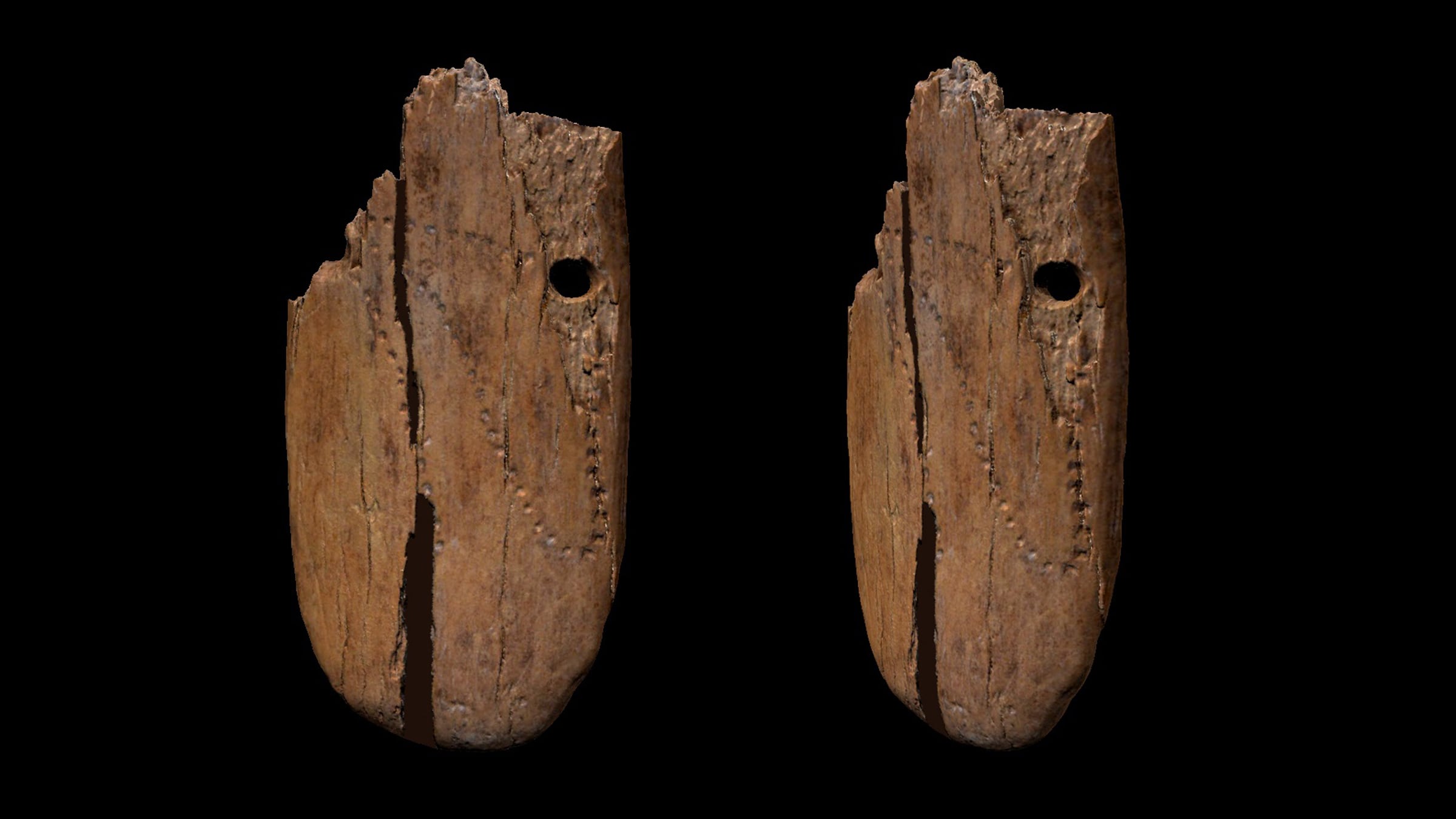Chybí informace o materiálu přívěsku. Je to z mamutího klu.
41,500-year-old pendant found in Poland, the oldest of its kind on the continent
Categories: Nálezy nejenom s detektorem kovů ve východní Evropě
The artefact from the Polish cave Stajnia was found together with other objects in 2010, but only recently a study examining its age was published. Radiocarbon dating has placed the pendant at 41,500 years ago, which is at least 1,500 years older than previous evidence of the production of similar artefacts by the earliest members of Homo sapiens in Europe. The object, decorated with puncture curves and smoothing, has thus "become" the oldest known decorated mammoth pendant in Eurasia.
"It is the oldest artefact of its kind and establishes a new starting date for a tradition directly linked to the"The scientists wrote in a study presented in the prestigious journal Nature. "The pendant was probably worn around someone's neck, but we can never be 100 percent sure," said study leader Sahra Talam, a specialist in human evolution and radiocarbon dating and professor of chemistry at the University of Bologna in Italy.
The study describes the object as follows, "The pendant is oval in shape with rounded edges, two drilled holes and decoration consisting of sequential puncture patterns. It is 4,5 cm long and 1,5 cm wide, and its thickness varies between 3,6 mm and 3,9 mm. One fully preserved perforation is visible near the upper edge. Another perforation near the opposite edge of the artefact is partially preserved. The diameter of the preserved perforation is 2.3 mm; the original diameter of the partially preserved perforation was probably the same. The dorsal surface of the artefact is decorated with at least 50 punctures forming an irregular looping curve. The ornament is partially destroyed by flaking, which occurred near the preserved hole. There are also longitudinal cracks on the surface of the object.'
Researchers say the pendant was created during the same period when anatomically modern humans first began developing jewelry and other forms of adornment around the world. "Why people started using jewelry at this time is a mystery that scientists are trying to understand," Sahra Talam said. Until now, very few pendants made of ivory as old or older than this are known.
"From that time, we only know of simply decorated animal teeth and mammoth ivory with engraved geometric lines. Dotted lines became a new type of decoration then. Similar examples of this type of decoration found in southern France and Germany have not yet been precisely dated; their chronological order is based on stratigraphy recorded in excavations in the early 1920s. This is quite inaccurate compared to modern methods of chronology," the professor explained.
Roman Němec
Sources: nature.com, sci-news.com, archaeology.org


Views of the virtually reconstructed pendant and microphotographs documenting the production technology - numerous examples of punctures A , C - E and traces of smoothing B and G. The longitudinal section of the perforations is shown in B, the scale is 1 cm
The article is included in categories:
- Archive of articles > Archaeology > Finds and rescue research abroad > Nálezy nejenom s detektorem kovů ve východní Evropě
Post
bobik600 píšou to :) "Předmět zdobený křivkami vpichů a ohlazením se tak „stal“ nejstarším známým zdobeným přívěskem z mamutoviny v Eurasii"
No jo, neumím číst. 
To je dobrá pecka 
 Až budou zkoumat za 2-3000 let artefakty z naší doby, tak to nebude žádné velké bádání. Vše zřejmě dokážou dohledat v textech. Tedy - vynález písma je jeden z nejnej vynálezů lidstva
Až budou zkoumat za 2-3000 let artefakty z naší doby, tak to nebude žádné velké bádání. Vše zřejmě dokážou dohledat v textech. Tedy - vynález písma je jeden z nejnej vynálezů lidstva 
Dneska se všechno ukládá digi, nosiče informací mají minimální trvanlivost. Myslím, že moc toho o nás nevybádají. Pak stačí jedna bouře na Slunci a jsme zpátky v době kamenný.
,,, veľmi odvážné tvrdenie ,,, prívesok










